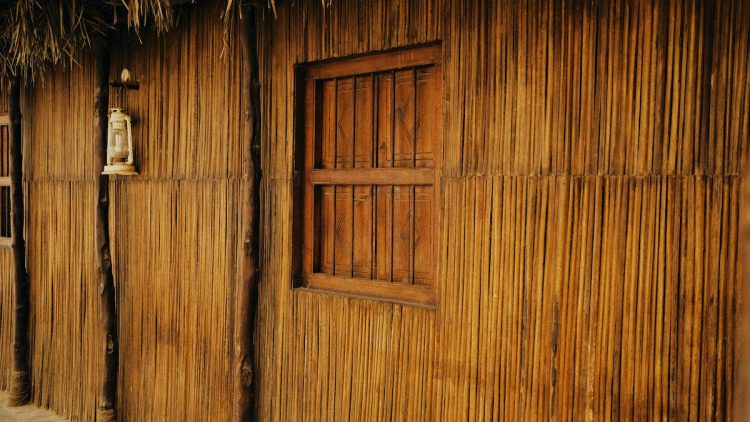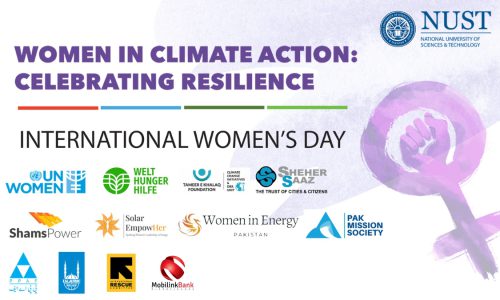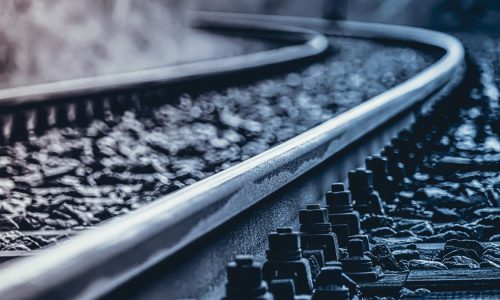Bamboo is a versatile and sustainable material that has been used for centuries in various cultures for construction purposes as shown in Figure 1 (a & b). Bamboo has been used in various forms, such as flooring, roofing, scaffolding, and wall cladding (Figure 2).
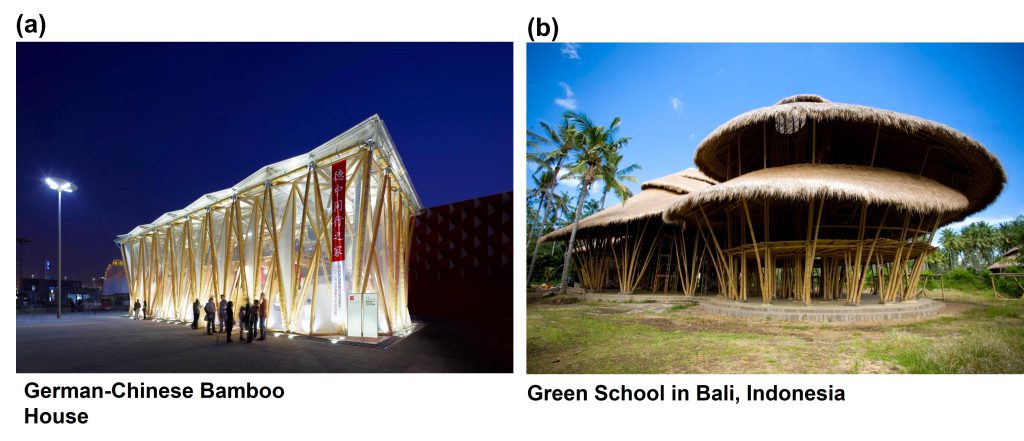
Recently, it has gained significant attention due to its significant eco-friendliness, durability, and strength. Bamboo has a higher strength-to-weight ratio than steel and is lighter than most conventional construction materials. In addition, bamboo grows rapidly and can be harvested within 3-5 years. Since bamboo is a lightweight material, its utilization can substantially reduce a structure’s overall weight and minimizes the use of heavy machinery during construction. With the rising costs of traditional construction materials such as steel and along with their substantial environmental impact, bamboo has emerged as a viable and cost-effective alternative.
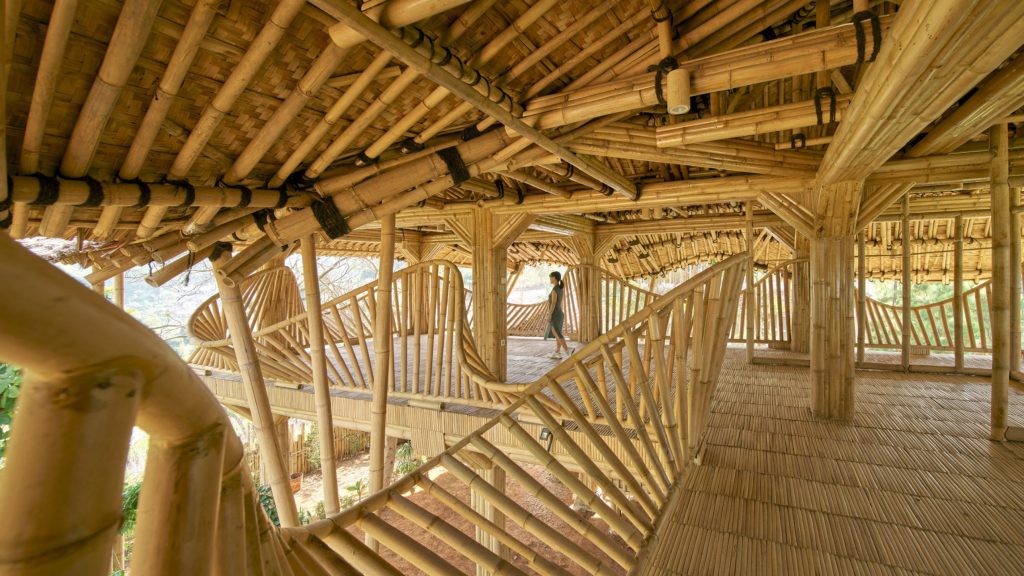
However, the use of bamboo as a structural material has been limited due to concerns about its durability and strength. With the chemical treatment process, bamboo can now be used as a structural material, replacing steel reinforcement.
A team of researchers from School of Civil and Environmental Engineering, National University of Sciences and Technology, Pakistan with research interests in sustainable construction materials, are exploring bamboo’s potential utilization in construction. While working on bamboo over the last 6-8 months, the team developed a chemical treatment process that enhances the durability and strength of bamboo, making it a suitable replacement for steel reinforcement. The chemical treatment involves the application of acetic acid, which effectively stabilizes bamboo and increases its resistance to decay and insects. This treatment process is a prominent step towards embracing sustainable construction, as it reduces the environmental impact (high carbon emissions) of conventional construction activities.
In our scientific research, a series of tests were conducted to evaluate the strength and durability of bamboo after the chemical treatment process. The results were remarkable, with the treated bamboo exhibiting a higher strength and durability than untreated bamboo by approximately 26% (Figure 3 (a)). Additionally, the treated bamboo also showed better resistance to decay and insects, making it suitable for construction in humid and tropical climates. As of now, we are in the process of testing chemically treated bamboo with enhanced strength characteristics in beam reinforcement replacing conventional steel (Figure 3 (b)).
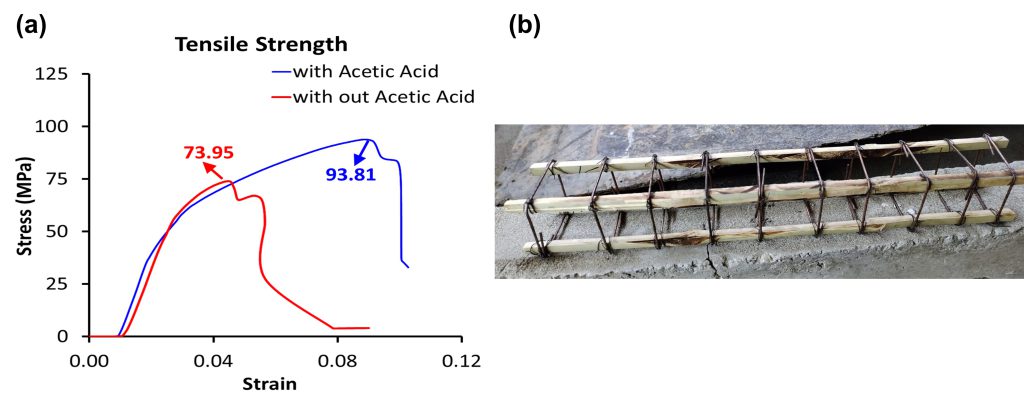
Pakistan is a developing country and is among the top 10 countries severely affected by climate change events (i.e., recent floods in 2022). Also, in Pakistan bamboo cultivation is abundant and is cultivated in more than 85 cities including Sargodha, Jhang, Kasur, Lahore, Khushab, Dera Ghazi Khan, etc as shown in (Figure 4). Therefore, utilizing chemically treated bamboo with improved strength in construction can play a significant role in climate change mitigation and adaptation such as in the development of low-cost green buildings (net zero structures), green housings and shelters in flood-prone areas, model structures (cafes, parks, etc.) for promoting sustainable construction, etc. Bamboo can also be used in combination with other materials such as concrete and steel to create lightweight and low-cost hybrid structures that offer a balance between strength, durability, and sustainability. This can substantially contribute to a more sustainable and climate-resilient future.

In conclusion, the use of bamboo in construction can be a significant step towards sustainable and green construction practices. The use of bamboo in construction offers numerous advantages, including cost-effectiveness, sustainability, and high strength and durability. Furthermore, bamboo utilization in construction can significantly reduce the carbon footprint of construction activities and can help promote a more sustainable future. In the case of Pakistan, our research group believes that the use of bamboo in construction is a good initiative that should be promoted and encouraged.
The author is an Assistant Professor at the Institute of Environmental Sciences and Engineering (IESE), School of Civil and Environmental Engineering (SCEE), National University of Sciences and Technology (NUST). He can be reached at [email protected].
Research Profile: https://bit.ly/3LOXz06

![]()

